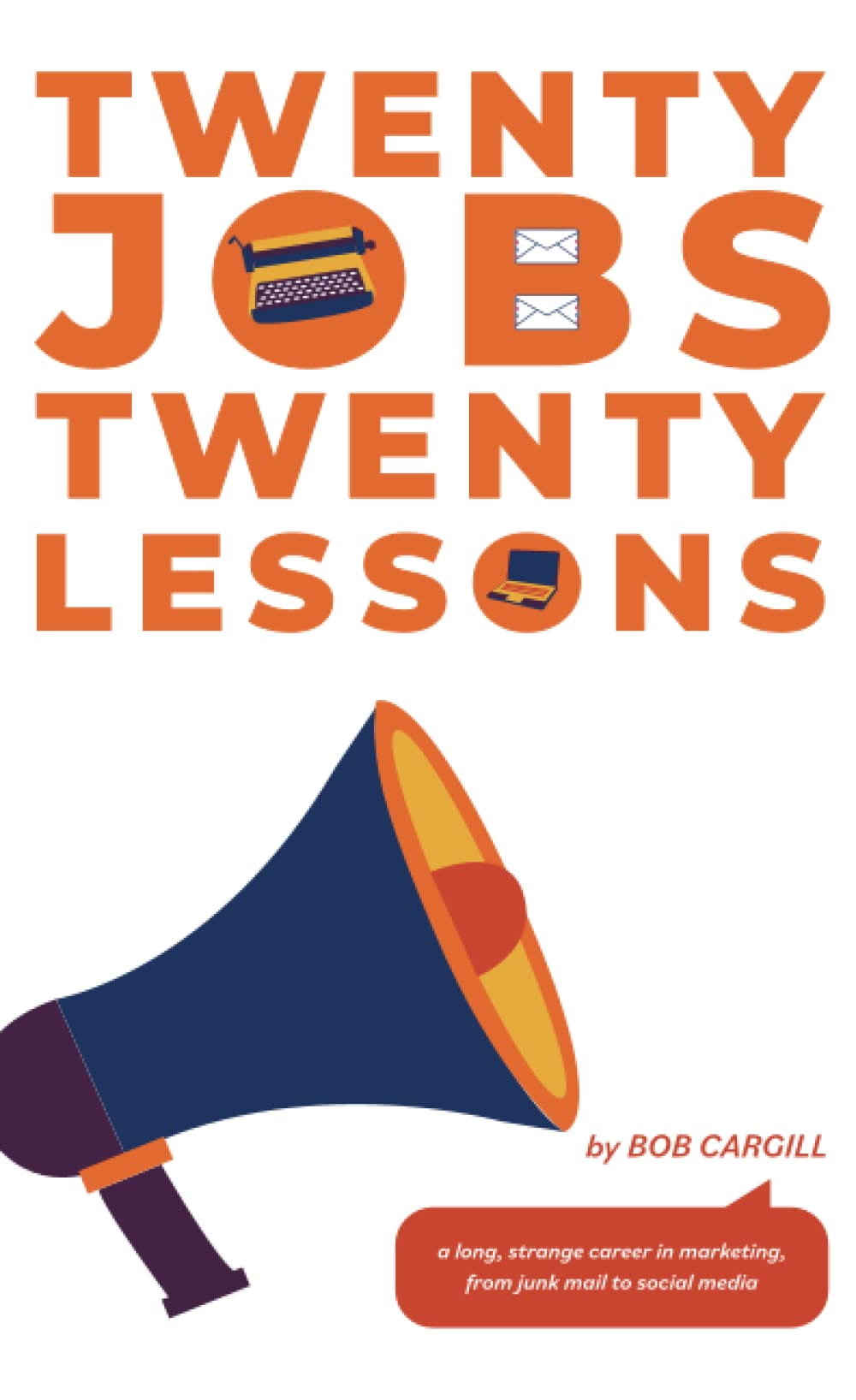
Being a thought leader means establishing your brand as an expert within your field and setting the stage for other people to come to you first when seeking information. The first time I met Bob Cargill in my class, this was exactly the kind of person I would consider a social media thought leader.
I spoke with Bob, who is a veteran in the marketing and social media marketing field, on his background, how to work in social media marketing and what it means to be a thought leader in social media.
Bob’s career began in 1983 as a copywriter for RCA Direct Marketing in New York City, which means he has been working in the marketing field for almost 4 decades. “I have dedicated myself to the marketing profession ever since, working at a number of different companies, mostly agencies, in a variety of roles, from copywriter to creative director and more.”
He has been a member of the New England Direct Marketing Association since 1990, where he also served as their president from 1999-2000. He was also the president of the American Marketing Association Boston from 2018- 2020 and will be reprising the role as president of the chapter this July.
Bob has had his work recognized over the years with over 40 awards from the New England Direct Marketing Association, receiving several Gold and Silver awards. Even with all these accomplishments, Bob has a 12-year-old YouTube channel where he shares ideas about marketing and using social media, as well as a personal brand on LinkedIn and Twitter. In recent years, he has taken on a new stage in his career, teaching marketing and social media at the college level.
“While I still have a few clients of my own now, the last few years I have begun to focus mostly on teaching, both marketing and social media, at several different universities in Boston, including, of course, Northeastern University.”
Getting into Bob’s presence as a thought leader, he has been invested with social media since the emergence of these online communication channels about 20 years ago. He self-published his social media blog in 2004 to appeal to the writer in him and share his experience in the field.
“Blogging made it possible for me to have my own forum where I could share my knowledge, expertise, experience, and opinions regarding the industry in which I earn my livelihood. It gave me a platform I could leverage to build my own community and establish myself as a thought leader.”

Bob has just released his book, Twenty Jobs, Twenty Lessons, which he wrote as a way of chronicling his career in marketing and to share lessons he has learned with others in the field. This book is intended to educate, entertain, inspire and inform, as well as give readers an idea of work at many different places over nearly 40 years.
“I have learned over the years that having any degree of success as a personal brand on social media is a trade-off. You have a big responsibility to your community, people who follow you and rely on you to share content on a consistent, uninterrupted basis.”
One thing that stuck with me from my course with Bob Cargill was that becoming a thought leader requires consistent effort and passion. Bob says “you have to be passionate about it and enjoy doing it day in and day out. You have to engage with people online frequently, listening to them and responding to them in a timely fashion.” Most importantly, I learned, there are no days off for content creators or thought leaders who have built themselves a personal brand.
Bob’s advice to aspiring thought leaders trying to become successful content creators or thought leaders is to make the best use of technology and be a great communicator.
“You have to be conspicuous in your presence on as many social media channels as possible, spending the bulk of your time, of course, where your audience members reside online. Ideally, you have an area of expertise that you can talk about regularly, but you are also able to cover a variety of topics and issues across a range of media.”
He strongly believes in incorporating real-world social media practices in the classroom, because social media can be used to help both teachers and students learn and communicate better. In our class, we had 3 Twitter Spaces chats, one which was documented on NU Media, where we shared our Social Media Today topics.
Bob believes that it is imperative for students to know how to use social media effectively, because it is fast becoming the communication channel of choice throughout the world. And as aspiring thought leaders, we should put much emphasis on the importance of building a personal brand using social media. He shared that:
“Students can establish themselves as thought leaders while they are in school, so that when they are looking for a job or internship, prospective employers will see just how experienced and educated they are in their respective areas of expertise. Blogging, Twitter Spaces, Twitter chats, YouTube videos, live videos, I could go on…all these and more are ways that social media can be leveraged for educational elevation in the classroom. Social media makes it possible to connect with people outside the classroom who are happy to contribute to the learning experience of students. Learn and use social media as much as possible, sooner rather than later, is my advice to anyone within earshot.”
‘A feature Bob encourages everyone to use is Twitter Spaces. In a classroom setting, Bob believes that Twitter Spaces is a great way to open up coursework discussions to a much wider audience, potentially people from all around the world who the students would otherwise not have an opportunity to connect with.
Bob shared, “Twitter Spaces gives students a confidence boost by underscoring the importance of what they have to say, knowing that there is a supportive audience for them beyond the classroom, people who are interested in their education and expertise, people who make them feel good about themselves by listening to them and engaging with them, people who want to contribute to the learning journey on which they are on.”
His plan as he moves forward as a professor is to take advantage of Twitter Spaces, and other relevant social media opportunities, in each of his classes across campuses as often as possible, and link it with the classes’ learning objectives.
By: Isabella Okuns
M.S. in Corporate and Organizational Communication CPS ‘22